Wire & Cable Cutters | Pacer Group
Mục Lục
Wire & Cable Cutters
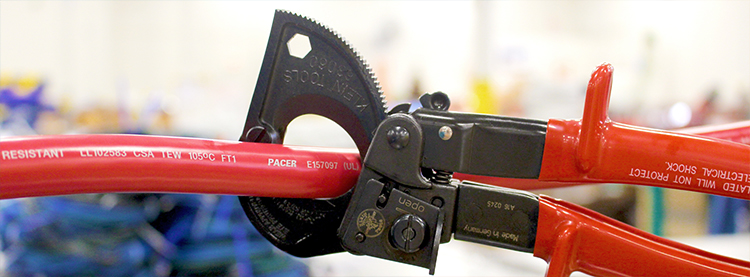
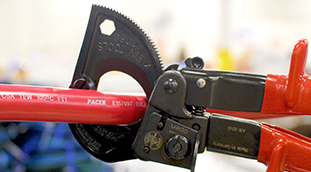
What are wire and cable cutters?
Wire and cable cutters are tools that have been designed to properly cut either wire or cable with minimal damage to the insulation or internal conductors of the wire or cable. Having a clean cut on a wire or cable can improve the quality of an electrical connection. Without the proper tools, you run the risk of tearing or otherwise damaging the insulation which can compromise the integrity of the wire or cable. More than that, you potentially damage the internal conductors which can severely affect the conductivity of the connection. What is the best way to avoid this? Use the proper wire and cable cutter to ensure that you get the cleanest cut and strong potential connection. The first thing to understand when looking at our wire and cable cutters is each tool is significantly different from the others.
“Using the proper wire and cable cutter to ensure that you get the cleanest cut and strong potential connection.”


Where are these products implemented?

Wire and cable cutters prevent unintentional damage
Pacer wire and cable cutters are implemented in applications that call for electrical wire and cable to be cut cleanly without damaging the insulation or conductors. They are perfect for use on new installations as well as when replacing or maintaining equipment. Many boaters keep a pair of wire and cable cutters on their boat for on the spot repairs. If you have worn cable cutters or damaged wire and cable cutters, then these are the perfect solution for you. These tools work with Pacer wire and cable as well as Pacer multiconductor and signal cable.
What types of wire and cable cutters are available?
Our wire and cable cutters can be broken into two main types, manual operation and ratcheting action. Each of these types is significantly different and offers separate advantages. Manual operation cutters offer single stroke wire and cable cutting and are simple to operate with one hand. Ratcheting action wire and cable cutters cut through thicker cables that would be difficult to cut with a manual operation cutter. The best course of action is deciding how often you will be using this tool and how thick of a wire gauge you will be routinely cutting. Operator exhaustion can slow production time so making sure you have the proper tool is a must.
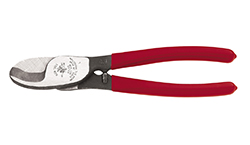
Manual Operation Wire and Cable Cutter
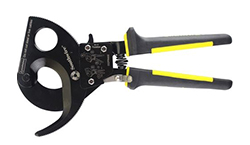
Ratchet Action Wire and Cable Cutter
Why would I use a ratcheting cutter?

A ratcheting cable cutter offers a variety of advantages including reducing operator fatigue. When an operator is cutting large numbers of wires and cables by hand with a manual operation cutter, they are sure to experience operator exhaustion. A ratcheting cable cutter removes this risk by taking the tension off the operator’s hands and putting it on the ratcheting cutter. A ratcheting cable cutter also ensures a cleaner cut since it can slice through 4/0 AWG cable without having to be readjusted. To cut through a cable that thick with a manual operation tool would likely require multiple attempts and lead to damage to the insulation and the internal conductors. Regardless of whether you are using a manual operation cable cutter or a ratcheting cable cutter, the first thing to do is pick a tool that cuts the proper wire and cable gauges.
What wire or cable gauges do these tools work with?
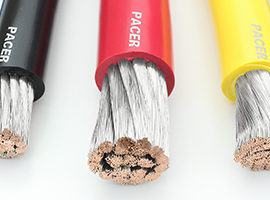
Each wire and cable cutter is designed to be used within a particular wire gauge range. Some are built to cut between 24 AWG to 8 AWG wire whereas others are made to handle everything from small wire gauges like 22 AWG all the way to large cables equivalent to 9.5 aught. One thing to pay attention to is the type of metals a wire cable cutter is designed to work with. While not all are our tools are specific to certain metals, some are, and may only work well with aluminum and copper. An easy way to determine which metals a cutter can handle is to look at the spec sheet.
How do I select the correct tool?
Selecting the correct tool starts with knowing what gauges of wire and cable you will be working with. As we said above, some wire and cable cutters can handle smaller gauges while some handle larger, and others still handle a range in between. Once you have your wire gauge range in mind, the next step would be to decide as to whether you want to use a manual operation wire and cable cutter or a ratcheting wire and cable cutter if both are available. With these two points of information in mind, you should have a clear view as to the tool that is best suited for your needs. The only other consideration would be whether or not you want a multi-purpose tool.
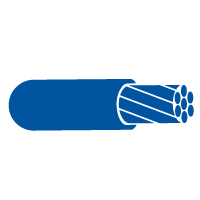


Are any of these tools multipurpose?

Some of our tools are, in fact, multi-purpose to handle several jobs more easily. Take, for example, our VT1000. This wire and cable cutter can strip and cut the wire as well as shear and rethread bolts, and even crimp terminals. That is a significant increase in capabilities. Rather than carry three separate tools, you can get the abilities of all three in one portable tool. These are the perfect wire and cable cutters for use on production lines, in marinas, repair shops, field service, and even in private garages. The bottom line is that all the tools on this page are built to the highest standard for repeatability and reliability regardless of your applications. When you see Pacer on your products, you know that you have quality.
*This page was updated on 2/08/2023*















![Toni Kroos là ai? [ sự thật về tiểu sử đầy đủ Toni Kroos ]](https://evbn.org/wp-content/uploads/New-Project-6635-1671934592.jpg)


